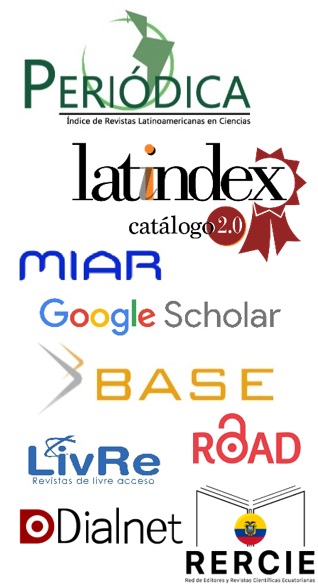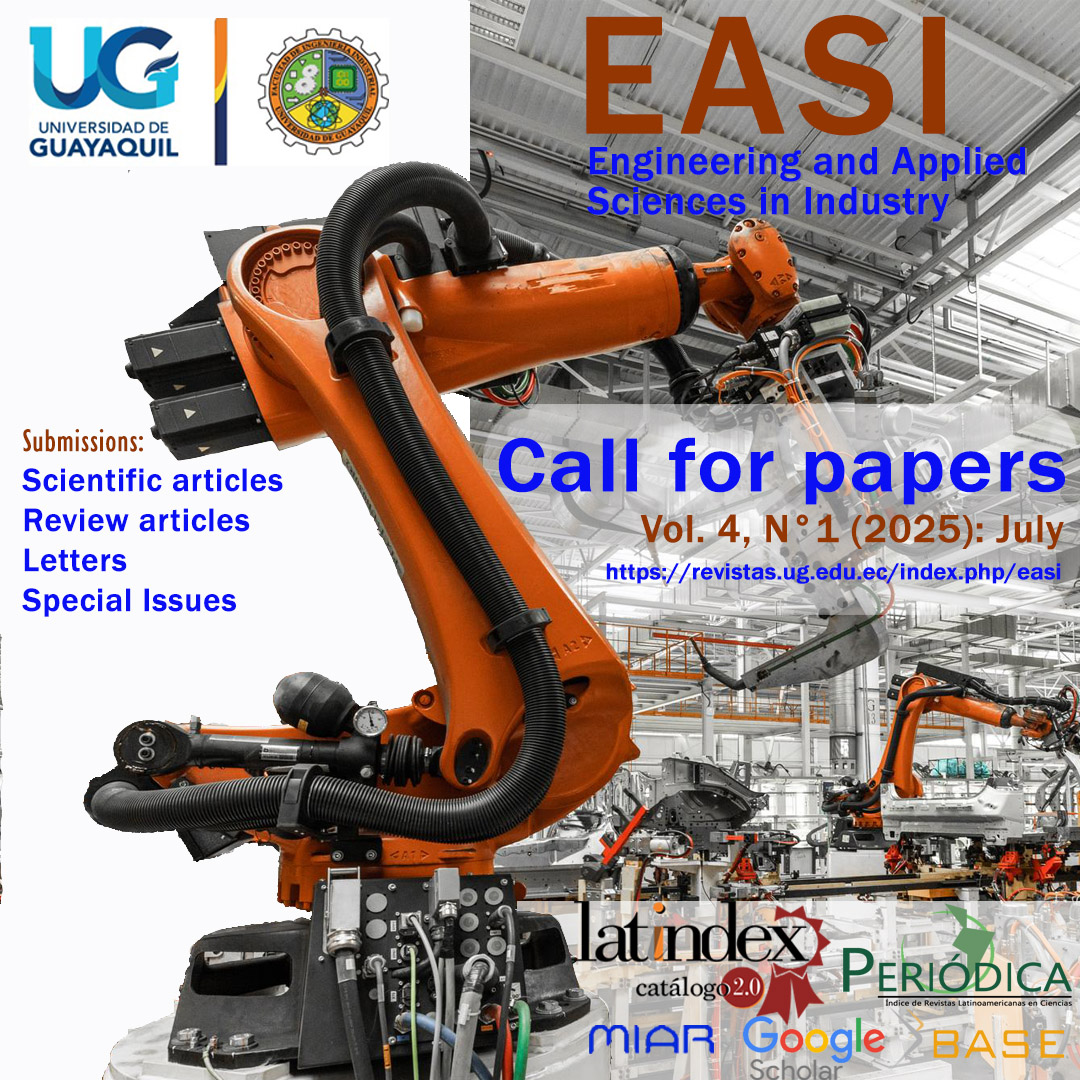Socioeconomic and environmental impacts of reforestation in Luz de América, Ecuador
DOI:
https://doi.org/10.53591/easi.v3i1.3005Keywords:
Reforestation, ecosystem restoration, sustainability, focus group discussions, social cohesion development, indigenous communitiesAbstract
This study shows how forest landscape restoration (FLR) initiatives impact ecology, livelihoods and social cohesion from the perspective of rural communities. To obtain data, 5 focus discussion groups were formed in the communities in the Luz de América parish, which since 2015 have worked together with the University of the Armed Forces (ESPE) on reforestation projects. A coding process was conducted to identify key themes and patterns that reveal the impacts of forest landscape restoration. The results indicate that FLR initiatives have promoted social cohesion and conflict resolution. This is evidenced through the establishment of Tsáchilas Community Organizations (TCO), the volunteer participation of agricultural engineering students and ESPE teachers. Among the impacts on the environment, we have: the restoration of biodiversity, improvement of living conditions for rural populations, better soil and water quality. Reforestation has improved the livelihoods of communities. The community members affirm that there is an increase in agricultural productivity, access to education, food security and better economic conditions. The authors encourage Ecuador to support and strengthen forest landscape restoration initiatives all around the country to improve social equity and productivity.
References
Angelsen, A., Wertz-Kanounnikoff, S. (2008). What are the key design issues for REDD and the criteria for assessing options? . In: Angelsen. A., (ed.) Moving Ahead with REDD: Issues, Options and Implications. Bogor, Indonesia, Center for International Forestry Research (CIFOR). https://hdl.handle.net/10568/20057
Adams, C., Rodrigues. S.T., Calmon, M., Kumar, C. (2016). Impacts of large-scale forest restoration on socioeconomic status and local liveli-hoods: what we know and do not know. Biotropica, 48(6), 731–744. https://doi.org/10.1111/btp.12385
Bautista, H., Moreno, M. & Argotti, E. (2024). Reforestation and its role in sustainable development of one community of Luz de América, Ecuador, with eight subtropical plant species implemented. In: V. Riccardo, T. Petaja and V.S. Kukhar (eds.). International Scientific and Practical Conference “Sustainable Development of the Environment and Agriculture: Green and Environmental Technologies”. E3S Web of Conferences (537). https://doi.org/10.1051/e3sconf/202453705031
Bautista, H., Argotti, E., Haro, A. & Rojas, A. (2023, May 25). Analysis SWOT on blue ammonia production as an alternative to reduce CO2 emissions in Ecuador [Conference session]. International May Conference on Strategic Management. Bor, Serbia, 19, 394-402. https://shorturl.at/dhmuV (accessed on 16/01/2024)
Bavorová, M., Ullah, A., Nyendu, D., Prishchepov, A.V. (2023). Determinants of farmland abandonment in the urban–rural fringe of Ghana. Regional Environ Change, 23(4), 122. https://d oi.o rg/1 0.1007/ s10113- 023- 02117-z (accessed on 09/01/2024)
Castillo-Vizuete, D., Chávez-Velásquez, C. (2022). State of the Ecuadorian forests and their contribution to the gross domestic product. Revista Pădurilor, 137(2), 001-058. https://www.cabidigitallibrary.org/doi/pdf/10.5555/20220565931 (accessed on 16/01/2024)
Brancalion, P.H., Holl, K.D. (2020). Guidance for successful tree planting initiatives. J. Appl Ecology, 57(12), 2349–2361. https://doi.org/10.1111/1365-2664.13725 (accessed on 16/01/2024)
Gobierno autónomo descentralizado GAD Santo Domingo de los Tsáchilas (2020). Plan de desarrollo y ordenamiento territorial 2020-2030. Available at: https://www.santodomingo.gob.ec/docs/transparencia/2018/05-Mayo/Anexos/s)/PDOT%202030/PDOT%202030%20SANTO%20DOMINGO.pdf (Accessed: 14 December 2023).
Global forest watch (2021). Global 2021 tree cover loss data by country. Available at: https://www.globalforestwatch.org/dashboards/country/ECU/?lang=en&widget=gladAlerts (Accessed: 24 December 2021).
Kokorsch, M., Gísladóttir, J. (2023). You talk of threat, but we think of comfort: the role of place attachment in small remote communities in Iceland that experience avalanche threat. Reg Environ Change, 23(150). https:// doi. org/ 10. 1007/ s10113- 023- 02144-w (Accessed: 24 December 2021).
Kovacic, Z., Viteri Salazar, O. (2017). The lose-lose predicament of deforestation through subsistence farming: unpacking agricultural expansion in the Ecuadorian Amazon. J. Rural Stud., 51, 105–114. https://doi.org/10.1016/j.jrurstud.2017.02.002. (Accessed: 24 December 2021).
Mayer, A.L. (2019). Family forest owners and landscape-scale interactions: A review. Landscape Urban Plan, 188, 4–18. https://doi.org/10.1016/j.landurbplan.2018.10.017
Ministry of the Environment of Ecuador MAE (2015) Estadísticas del Patrimonio Natural: Datos sobre bosques, ecosistemas, especies, carbono y deforestación del Ecuador continental. Available online at: https://mluisforestal.wordpress.com/wp-content/uploads/2016/01/estadisticas-patrimonio-natural-mae.pdf. (accessed on 22/01/2024)
Montana, E., Diaz, H.P., Hurlbert, M. (2016). Development, local livelihoods, and vulnerabilities to global environmental change in the South American Dry Andes. Reg Environ Change, 16(8), 2215– 2228. https:// doi. org/ 10. 1007/ s10113- 015- 0888-9
Montufar, R., Louise, C., Tranbarger, T. (2018). Elaeis oleifera (Kunth) Cortés: A neglected palm from the Ecuadorian Amazon. Revista Ecuatoriana de Medicina y Ciencias Biológicas, 39(1), 11-18. https://doi.org/10.26807/remcb.v39i1.584
Pozo-R., Wilmer E. (2013). MAMÍFEROS DE HÁBITATS FRAGMENTADOS DE LA PROVINCIA SANTO DOMINGO DE LOS TSÁCHILAS. Edi-EESPE, https://doi.org/10.13140/2.1.1544.9923.
Ullah, A. (2024) Forest Landscape Restoration and Its Impact on Social Cohesion, Ecosystems, and Rural Livelihoods: Lessons Learned from Pakistan. Regional Environmental Change, 24(26). https://doi.org/10.1007/s10113-024-02198-4 (accessed on 11/01/2024)
Wunder, S., Albán, M. (2008). Decentralized payments for environmental services: The cases of Pimampiro and PROFAFOR in Ecuador. Ecological Economics, 65(4), 685-698. https://doi.org/10.1016/j.ecolecon.2007.11.004
Espin, W.P., Bastidas, M.B. y Durán, A. (2017). Propuesta metodológica de evaluación del balance social en asociaciones de economía popular y solidaria del Ecuador. CIRIEC. Revista de economía pública, social y cooperativa. 90, 123-157. https://www.redalyc.org/pdf/174/17452685005.pdf
Published
How to Cite
Issue
Section
License
Copyright (c) 2024 Hugo Bautista-Espinoza, Mario Moreno-Muñoz, Eduardo Argotti-Valencia, Patricio Jiménez-Pozo

This work is licensed under a Creative Commons Attribution-NonCommercial-NoDerivatives 4.0 International License.
Contributions published in the EASI journal follow the open access license CC BY-NC-ND 4.0 (Creative Commons Attribution-NonCommercial-NoDerivs 4.0). This license empowers you as an author and ensures wide dissemination of your research while still protecting your rights.
For authors:
- Authors retain copyrights without restrictions according to CC BY-NC-ND 4.0 license.
- The journal obtains a license to publish the first original manuscript.
For readers/users:
Free access and distribution: Anyone can access, download, copy, print, and share the published article freely according to the license CC BY-NC-ND 4.0 terms.
Attribution required: If any third party use the published material, they must give credit to the creator by providing the name, article title, and journal name, ensuring the intellectual property of the author(s), and helping to build the scholarly reputation.
Non-commercial use: only noncommercial use of the published work is permitted. Noncommercial means not primarily intended for or directed towards commercial advantage or monetary compensation by any third party.
No modifications allowed: The content of the published article cannot be changed, remixed, or rebuilt upon the author’s work. This ensures the integrity and accuracy of the research findings.



